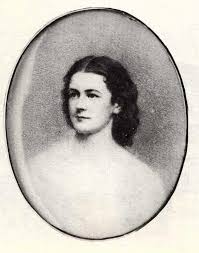Reared
near Baltimore, Hetty Cary was related to two of Virginia’s “fist families,”
the Randolphs and the Jeffersons. War forced her to choose between leaving home
and facing imprisonment on suspicion of harboring Confederate sympathies, so
she settled in Richmond. Soon she was a leader among those working to provide
clothing, food, and other necessities for soldiers.
After
nearly four years of volunteer work, her activities caught the eye of
thirty-two-year-old John Pegram, who sought and won her hand. On January 19,
1865, the refugee from Maryland and the Confederate brigadier general were
married. Hetty enjoyed this relationship just three weeks; on February 5, 1865,
the husband she found in the course of her war work was killed in the battle of
Hatcher’s Run.














